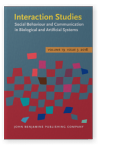Karas, Vincent, Dagmar M. Schuller & Björn W. Schuller
2024.
Audiovisual Affect Recognition for Autonomous Vehicles: Applications and Future Agendas.
IEEE Transactions on Intelligent Transportation Systems 25:6
► pp. 4918 ff.

Wang, Dingyu, Shaocheng Jia, Xin Pei, Chunyang Han, Danya Yao & Dezhi Liu
2024.
DERNet: Driver Emotion Recognition Using Onboard Camera.
IEEE Intelligent Transportation Systems Magazine 16:2
► pp. 117 ff.

Zhou, Xin, Xing Chen, Liu Tang, Yi Wang, Jingyue Zheng & Wei Zhang
2024.
Event-related driver stress detection with smartphones in an urban environment: a naturalistic driving study.
Ergonomics ► pp. 1 ff.

Bosch, Esther, Raquel Le Houcq Corbí, Klas Ihme, Stefan Hörmann, Meike Jipp & David Käthner
2023.
Frustration Recognition Using Spatio Temporal Data: A Novel Dataset and GCN Model to Recognize In-Vehicle Frustration.
IEEE Transactions on Affective Computing 14:4
► pp. 2864 ff.

Bosch, Esther, David Käthner, Meike Jipp, Uwe Drewitz & Klas Ihme
2023.
Fifty shades of frustration: Intra- and interindividual variances in expressing frustration.
Transportation Research Part F: Traffic Psychology and Behaviour 94
► pp. 436 ff.

Rao, Shruti, Surjya Ghosh, Gerard Pons Rodriguez, Thomas Röggla, Pablo Cesar & Abdallah El Ali
2023.
From Video to Hybrid Simulator: Exploring Affective Responses toward Non-Verbal Pedestrian Crossing Actions Using Camera and Physiological Sensors.
International Journal of Human–Computer Interaction 39:16
► pp. 3213 ff.

Zhao, Sicheng, Xiaopeng Hong, Jufeng Yang, Yanyan Zhao & Guiguang Ding
2023.
Toward Label-Efficient Emotion and Sentiment Analysis.
Proceedings of the IEEE 111:10
► pp. 1159 ff.

Bosch, Esther, Marie Klosterkamp, Angelo Guevara, David Kaethner, Alexandra Bendixen & Klas Ihme
2022.
2022 13th IEEE International Conference on Cognitive Infocommunications (CogInfoCom),
► pp. 000011 ff.

Nadri, Chihab, Ignacio Alvarez, Esther Bosch, Michael Oehl, Michael Braun, Jennifer Healey, Christophe Jallais, Wendy Ju, Jingyi Li & Myounghoon Jeon
2022.
CHI Conference on Human Factors in Computing Systems Extended Abstracts,
► pp. 1 ff.

Oh, Geesung, Euiseok Jeong, Rak Chul Kim, Ji Hyun Yang, Sungwook Hwang, Sangho Lee & Sejoon Lim
2022.
Multimodal Data Collection System for Driver Emotion Recognition Based on Self-Reporting in Real-World Driving.
Sensors 22:12
► pp. 4402 ff.

Siddiqi, Muhammad Hameed, Khalil Khan, Rehan Ullah Khan & Amjad Alsirhani
2022.
Face Image Analysis Using Machine Learning: A Survey on Recent Trends and Applications.
Electronics 11:8
► pp. 1210 ff.

Sukhavasi, Susrutha Babu, Suparshya Babu Sukhavasi, Khaled Elleithy, Ahmed El-Sayed & Abdelrahman Elleithy
2022.
Deep Neural Network Approach for Pose, Illumination, and Occlusion Invariant Driver Emotion Detection.
International Journal of Environmental Research and Public Health 19:4
► pp. 2352 ff.

Zhou, Xin, Liang Ma & Wei Zhang
2022.
Event-related driver stress detection with smartphones among young novice drivers.
Ergonomics 65:8
► pp. 1154 ff.

Bustos, Cristina, Neska Elhaouij, Albert Sole-Ribalta, Javier Borge-Holthoefer, Agata Lapedriza & Rosalind Picard
2021.
2021 9th International Conference on Affective Computing and Intelligent Interaction (ACII),
► pp. 1 ff.

Jipp, Meike & Jochen Steil
2021.
Steuern wir oder werden wir gesteuert? Chancen und Risiken von Mensch-Technik-Interaktion. In
Zusammenwirken von natürlicher und künstlicher Intelligenz,
► pp. 17 ff.

Krüger, Sandra, Esther Bosch, Klas Ihme & Michael Oehl
2021.
In-Vehicle Frustration Mitigation via Voice-User Interfaces – A Simulator Study. In
HCI International 2021 - Posters [
Communications in Computer and Information Science, 1421],
► pp. 241 ff.

Lemmer, Karsten, Meike Jipp, Heiner Bubb, Hans-Jörg Vögel, Matthias Jung, Georg Laukart & Thomas Vorberg
2021.
Mensch-Technik-Kooperation und Fahrzeuginnenraum. In
Vieweg Handbuch Kraftfahrzeugtechnik,
► pp. 1161 ff.

Franz, Oliver, Uwe Drewitz & Klas Ihme
2020.
Facing Driver Frustration: Towards Real-Time In-Vehicle Frustration Estimation Based on Video Streams of the Face. In
HCI International 2020 - Posters [
Communications in Computer and Information Science, 1226],
► pp. 349 ff.

Nadri, Chihab, Jingyi Li, Esther Bosch, Michael Oehl, Ignacio Alvarez, Michael Braun & Myounghoon Jeon
2020.
12th International Conference on Automotive User Interfaces and Interactive Vehicular Applications,
► pp. 106 ff.

Ortoncelli, Andre Roberto, Luciano Silva, Olga Regina Perreira Bellon, Tiago Mota de Oliveira & Juliana Daga
2020.
2020 15th IEEE International Conference on Automatic Face and Gesture Recognition (FG 2020),
► pp. 587 ff.

Pape, Anna-Antonia, Sonja Cornelsen, Victor Faeßler, Klas Ihme, Michael Oehl, Uwe Drewitz, Franziska Hartwich, Frank Schrödel, Andreas Lüdtke & Martin Schramm
2020.
Empathic assistants – Methods and use cases in automated and non-automated driving. In
20. Internationales Stuttgarter Symposium [
Proceedings, ],
► pp. 435 ff.

Weidemann, Alexandra & Nele Russwinkel
2019.
Proceedings of Mensch und Computer 2019,
► pp. 819 ff.

Weidemann, Alexandra & Nele Rußwinkel
2021.
The Role of Frustration in Human–Robot Interaction – What Is Needed for a Successful Collaboration?.
Frontiers in Psychology 12

Zepf, Sebastian, Tobias Stracke, Alexander Schmitt, Florian van de Camp & Juergen Beyerer
2019.
2019 18th IEEE International Conference On Machine Learning And Applications (ICMLA),
► pp. 202 ff.

Bosch, Esther, Michael Oehl, Myounghoon Jeon, Ignacio Alvarez, Jennifer Healey, Wendy Ju & Christophe Jallais
2018.
Adjunct Proceedings of the 10th International Conference on Automotive User Interfaces and Interactive Vehicular Applications,
► pp. 44 ff.

This list is based on CrossRef data as of 4 july 2024. Please note that it may not be complete. Sources presented here have been supplied by the respective publishers.
Any errors therein should be reported to them.
